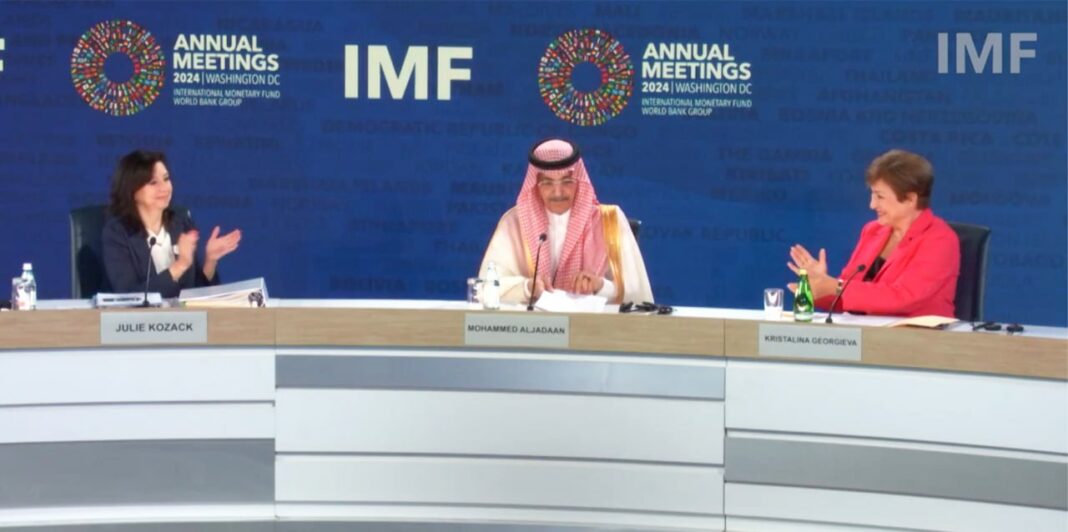The Global Sovereign Debt Roundtable (GSDR) forum has made strides in assisting nations dealing with financial difficulties, which the International Monetary Fund (IMF) applauds.
In her Global Policy Agenda for the year, IMF Managing Director Kristalina Georgieva stated that the Fund has made tackling debt vulnerabilities and assisting international efforts to achieve prompt and predictable debt resolution a top priority, and that these efforts are now paying off.
“As evidenced by the recent milestone achievements by Ghana and Ethiopia, the Common Framework is delivering faster and more predictable debt treatments, though further efforts are needed to support efficient resolution of debt crises,” she said.
According to the Managing Director, progress has been underpinned by enhanced cooperation among stakeholders at the GSDR, which has helped build consensus on technical issues, such as comparability of treatment and timelines for restructuring processes.
In April, the IMF Board endorsed important reforms to promote the Fund’s capacity to support countries undertaking a debt restructuring, including the establishment of a credible official creditor process “that has already expedited the IMF’s ability to respond.”
She said that the ongoing review of the Debt Sustainability Framework for LICs aims at ensuring assessments remain aligned with current and emerging debt vulnerabilities.
On her Global Policy Agenda, she stated that the global economy has proven resilient, and a soft landing is within reach, while inflation has moderated due to tight monetary policy and fading supply shocks, and growth is expected to remain steady.
“But uncertainty remains significant, with risks tilted to the downside; medium-term growth prospects are lackluster; public debt has reached record highs and is expected to approach 100 percent of GDP by 2030; and geoeconomic fragmentation threatens to undo decades of gains from cross-border economic integration,” she added.
Transformative changes—the green transition, demographic shifts, and digitalization, including artificial intelligence—are posited as poised to reshape the global economy, creating challenges but also opportunities.
During the IMF and the World Bank annual meeting that was held from October 21st to yesterday, the World Economic Outlook report was released with the title: ‘Policy Pivot, Rising Threats.’
It said that global growth is expected to remain stable yet underwhelming.
At 3.2 percent in 2024 and 2025, the growth projection is virtually unchanged from those in both the July 2024 World Economic Outlook Update and the April 2024 World Economic Outlook.
However, notable revisions have taken place beneath the surface, with upgrades to the forecast for the United States offsetting downgrades to those for other advanced economies—in particular, the largest European countries.
Likewise, in emerging market and developing economies, disruptions to production and shipping of commodities—especially oil—conflicts, civil unrest, and extreme weather events have led to downward revisions to the outlook for the Middle East and Central Asia and for sub-Saharan Africa.
The latest forecast for global growth five years from now—at 3.1 percent—remains mediocre compared with the pre-pandemic average.
Persistent structural headwinds—such as population aging and weak productivity—are holding back potential growth in many economies.
The report stated that global headline inflation is expected to fall from an annual average of 6.7 percent in 2023 to 5.8 percent in 2024 and 4.3 percent in 2025, with advanced economies returning to their inflation targets sooner than emerging market and developing economies.
According to the research, Ethiopia’s GDP is expected to expand by 6.1 percent in 2024 and 6.5 percent in the following year, a 0.1 percent decrease from the July projection.
Niger and Rwanda have risen to the top with 9.9 percent and 7.0 percent growth in the current year, respectively, while the sub-Saharan average is 3.6 and 4.2 percent for this year and 2025.







